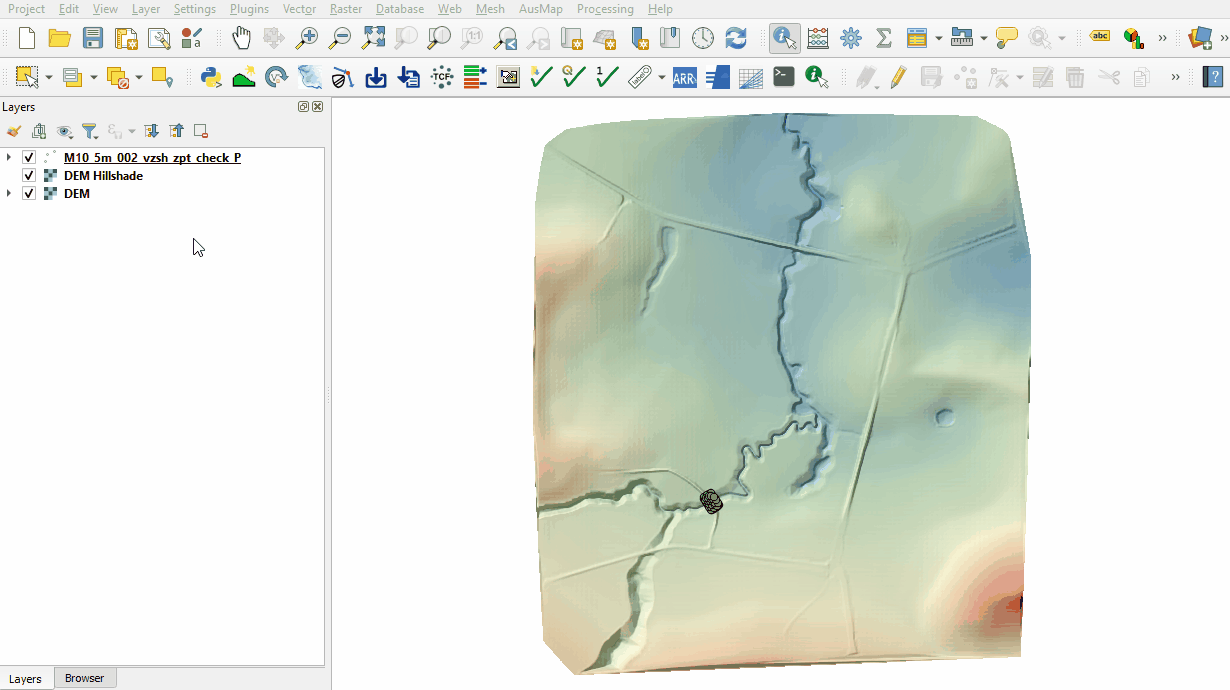Tutorial M10 002 Check Files QGIS GPKG: Difference between revisions
Jump to navigation
Jump to search
Content deleted Content added
| Line 12: | Line 12: | ||
Review the check files: <br> |
Review the check files: <br> |
||
<ol> |
<ol> |
||
<li>Open the file, either: |
|||
<li>Drag and drop the '''M10_5m_002_Check.gpkg''' from the '''Module_10\TUFLOW\check''' folder into QGIS. |
|||
:*Within the QGIS Browser Panel, navigate to '''Module_10\TUFLOW\check\M10_5m_002_Check.gpkg''' and double click the following layer, or |
|||
<li>Open the following layer into QGIS: |
|||
:*'''M10_5m_002_vzsh_zpt_check_P''' |
::*'''M10_5m_002_vzsh_zpt_check_P''' |
||
:*In File Explorer, navigate to the '''Module_10\TUFLOW\check''' folder, drag and drop the '''M10_5m_002_Check.gpkg''' into the QGIS workspace and select the layer above. |
|||
<li>Use the 'Apply TUFLOW Styles to Open Layers'. |
<li>Use the 'Apply TUFLOW Styles to Open Layers'. |
||
<li>Use the 'Apply GPKG Layer Names'. |
<li>Use the 'Apply GPKG Layer Names'. |
||
Revision as of 11:04, 31 July 2023
Page Under Construction
Introduction
QGIS is used to import the check files and review the dam break.
Method
This tutorial introduces:
Review the check files:
- Open the file, either:
- Within the QGIS Browser Panel, navigate to Module_10\TUFLOW\check\M10_5m_002_Check.gpkg and double click the following layer, or
- M10_5m_002_vzsh_zpt_check_P
- In File Explorer, navigate to the Module_10\TUFLOW\check folder, drag and drop the M10_5m_002_Check.gpkg into the QGIS workspace and select the layer above.
- Use the 'Apply TUFLOW Styles to Open Layers'.
- Use the 'Apply GPKG Layer Names'.
- The vzsh_zpt_check file contains information on the elevation points that change over time, elevation change, final elevation and trigger conditions.
Note: [35;70] is a unique identifier of the grid cell that the water level trigger point is contained within. It comes from the the grd_check layer where, in this example, the attribute 'n' is 35 and 'm' is 70 for the cell containing the trigger.

Conclusion
- The topographic modifications representing the dam break were inspected.
| Up |
|---|